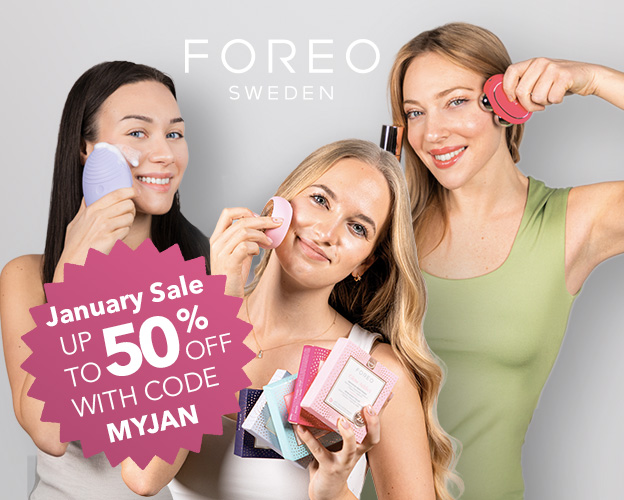5 min read
Shea Butter: From Cellulite and Stretch Marks to Anti-Aging

What is rich and was loved by Cleopatra? No, not Julius Caesar, but shea butter - the luxurious plant butter with remarkable properties. In addition to being a common ingredient in skin care products, abundant shea butter skin benefits result in many people also using raw shea butter in their routines.
It is difficult to believe that this humble-looking nut can live up to its legend, and you may have heard about concerns like “Is shea butter good for acne-prone skin?”, “Does shea butter clog pores?” or “Can I be allergic to shea butter?” Here are the answers to all your most common questions and a walk through the shea butter basics.
What is shea butter?
Shea butter is a luxurious seed fat derived from the shea tree, which grows abundantly in East and West tropical Africa. The butter comes from the oily kernels inside the shea tree seed and has been used for various skin care and medicinal purposes for thousands of years. Today, shea butter and its derivatives are widely used in the food, pharmaceutical, and cosmetic industries for soap making, skincare items, lubricants and paints, cooking oil, margarine, detergents, candles, or cocoa butter substitutes by chocolate manufacturers.
After the kernel removal, the seed is ground into a powder and boiled in water until the butter rises to the top of the water and becomes a solid rich in five principal fatty acids: palmitic, stearic, oleic, linoleic, and arachidic acids. This is the technical description. But shea butter is also called “Woman’s Gold” in regions such as Burkina Faso - as it is produced primarily by women and accounts for a large amount of female income in African countries.
Shea butter for skin
Due to its humectant properties, shea butter works wonders for dry and cracked skin (literally) from head to toe. If you’re having trouble retaining essential moisture, feel uncomfortably tight in your skin, or see tiny cracks and flakes, shea butter locks in moisture for an extended period for a comfortable feel and a nourished silky shine. It also restores elasticity and contains phenolic compounds known for their antioxidant properties, which fight free radical damage. Cellulite has nowhere to hide, and you can prevent stretchmarks, for example, during pregnancy.
It is also a fantastic refresher for dull, tired skin that is losing elasticity. If you’ve noticed these issues, we recommend trying Acai Berry UFO™ activated mask, which merges the best berry and seed universes into a single infusion to smooth and plump skin while fighting oxidative damage.
Shea butter is rich in vitamins A, E, and vitamin F (which is a mixture of alpha-linolenic acid (ALA) and linoleic acid (LA)) to aid in treating conditions like eczema, dermatitis, and erythema while slowing down premature aging.
If you’re particularly concerned with premature aging, we recommend FOREO’s Youth Junkie 2.0 UFO™ activated mask with shea butter, collagen, peptides, olive oil, and jojoba oil. It is ideal for restoring youthful freshness & elasticity to dry skin with fine lines.

For those looking for a deep cleanse that will remove sebum, all kinds of makeup (even hardcore waterproof ones), and SPF - but are very protective of their skin barrier - we recommend LUNA™ Ultra-Nourishing Cleansing Balm. This lightweight and waterless balm melts into a silky oil, featuring softening Sweet Almond Oil, moisturizing Jojoba Oil, nourishing Shea Butter, and antioxidant Vitamin E for soft, supple, and refreshed skin. It is possible to cleanse without stripping the barrier.

How to use shea butter?
You can use just a tiny amount or be quite liberal with the application to the face and body - using it as a little pick-me-up or abundantly as a nourishing mask for 15-30 minutes. Use as:
ANTI-CELLULITE
For cellulite and stretch marks, apply a small amount to affected areas and massage it as you would with any other lotion (ideally twice a day, if life permits).
DRY SKIN MOISTURIZER & PRIMER
If you have been looking for a nourishing dry skin primer for makeup prep, apply shea butter. You’ll also reduce dark circles or bags underneath your eyes for an unexpected double whammy.
ANTI-FRIZZ HAIR MASK
Shea butter can double as a hair mask to smooth and manage frizz. Melt a couple of teaspoons of shea butter in the microwave or on the stove and apply it to clean and damp hair, starting with the dry ends and working your way up to the scalp. Tuck your hair under a shower hat, and leave for 30 minutes. Rinse and wash the hair mask with regular shampoo and conditioner.
Does shea butter clog pores?
Oily skin owners or those with problematic and blemish-prone skin go into panic mode when presented with any skincare product containing oil or butter on the ingredients list. Their fears are reasonable, as many of these ingredients can prove comedogenic and problematic for these skin types.
Shea butter by itself is not comedogenic or pore-clogging. However, since it’s very emollient for some skin types, especially oily and acne-prone skin, it could form too much of an occlusive layer and clog pores. As an occlusive, shea butter functions similarly to Vaseline - it seals and locks in moisture already present in the skin. So, is it okay to use shea butter for oily and acne-prone skin?
A study warns that shea butter may clog your pores if you have intense acne-prone skin. Its comedogenic rating (the comedogenic scale rates skincare ingredients based on how likely they are to cause acne or breakouts) ranges from 0 to 2 on a scale of 0 to 5.

One important thing to note is that even reviewed non-comedogenic ingredients are not guaranteed not to cause breakouts because everyone’s skin is different, and we react differently to the same stimuli or ingredients. It also depends on what you pair shea butter with or what else is in the formula. For example, if shea butter has a meager percentage on the ingredient list, it’s not high enough to have the strong occlusive properties we discussed.
There are many nuances to determining if a skincare ingredient will work for our skin. Another useful advice besides looking at the ingredients is to check the product's texture. Usually, if something is really thick, it may not work as well for acne-prone skin as a thinner consistency would. So, if you have really acne-prone skin, there may be better choices than shea butter.
Shea butter allergy
If you’re allergic to nuts, you may wonder if you can also be allergic to shea butter. The American Academy of Allergy, Asthma, and Immunology's answer is very reassuring. Shea nut is a member of the Sapotaceae family and appears to be distantly related to Brazil nut. However, despite its everyday use, there are no reports of allergic reactions to Shea nut or Shea butter.
In summary, although Shea is a nut and butter derived from the nut, according to the published data on the topic, shea butter appears safe for people allergic to nuts or peanuts.
 From ancient pomades, soaps, and skincare lotions to the widespread global cosmetic industry, Shea butter has earned its status as a skincare superstar by efficiently addressing some of the most prominent skin concerns, especially those of normal and dry skin types. We hope you have found a perfect shea butter application for your skin and would love it if you shared your experiences with our community in the comments below.
From ancient pomades, soaps, and skincare lotions to the widespread global cosmetic industry, Shea butter has earned its status as a skincare superstar by efficiently addressing some of the most prominent skin concerns, especially those of normal and dry skin types. We hope you have found a perfect shea butter application for your skin and would love it if you shared your experiences with our community in the comments below.
Have a great day, and enjoy living in your skin!








Comments
1 comments
Leave a comment